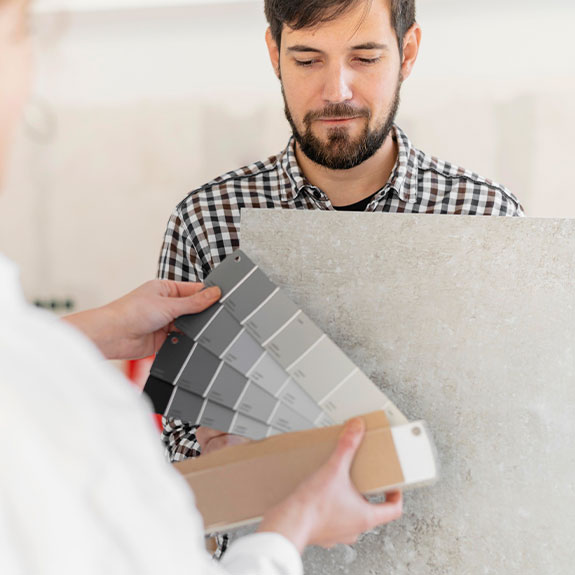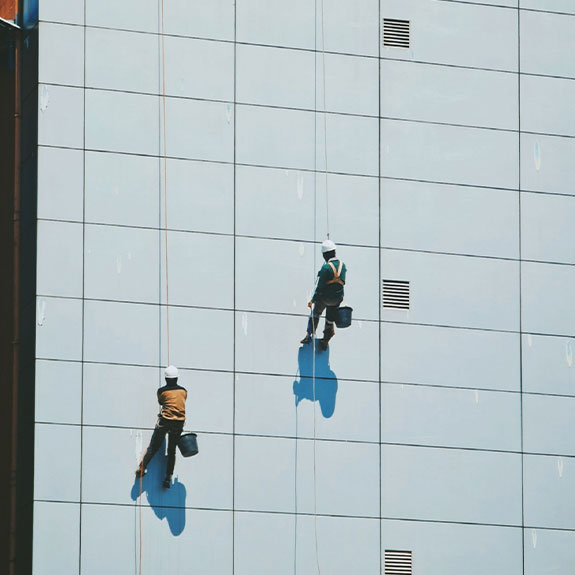The facade of a building not only defines its aesthetics, but also fulfills essential functions such as protection against climatic agents and improving thermal and acoustic insulation. Choosing the best material for facades is key in new construction and renovations, as it influences their durability, maintenance and energy efficiency.
Factors to consider when choosing a coating
- Climate and location: Humidity, sun exposure and low temperatures affect the durability of the coating.
- Energy efficiency: Good insulation can reduce energy consumption by 30%.
- Maintenance: Some materials need periodic care, while others require little attention.
- Aesthetics and personalization: The façade should harmonize with the architectural style of the building.
- Budget and long-term cost: Cheaper material initially may imply higher maintenance costs.

Types of materials for facades and their characteristics
- Ventilated facades: Incorporate an air chamber to improve thermal insulation and prevent humidity.
- Ceramic tiles: Resistant to humidity and temperature changes, with multiple design options.
- Natural stone: Rustic aesthetics and high durability, although with less thermal insulation capacity.
- Wood: Provides warmth, but needs treatments against humidity and insects.
- Exposed brick: High resistance and moderate insulation.
- Concrete: Industrial finish, resistant and low maintenance.
- Acrylic coatings and resins: They offer multiple finishes and are easy to apply.
Comparison of the best materials for facades
The choice of the best material depends on factors such as durability, insulation and maintenance. Below, we compare some of the most commonly used ones:
- Durability: Natural stone and exposed brick have a useful life in excess of 50 years.
- Maintenance: Ceramic and acrylic coatings require very little care.
- Thermal efficiency: Ventilated facades are the most effective for saving energy.
- Initial and long-term cost: Materials such as concrete and brick require more initial investment, but less maintenance.

Most recommended coatings according to the type of construction
Depending on the type of work, some options are more advisable than others:
- Single-family houses: Balance between aesthetics and maintenance. Ceramic tiles and exposed brick.
- Residential buildings: High-strength materials, such as ventilated facades and SATE.
- Sustainable construction: Priority is given to environmentally friendly materials such as certified wood and natural stone.
- Rehabilitation of buildings: The aim is to respect the original aesthetics, with options such as rustic brick and mineral coatings.
Maintenance and care according to the type of material
Maintenance is key to the durability of the facade. Stone and brick require periodic cleaning, while wood needs anti-humidity treatments. On the other hand, ceramic and acrylic coatings require very little care.

Choosing the best façade material is a decision that affects the aesthetics, comfort and durability of the building. There is no single ideal choice; it depends on climate, budget and type of construction.
In Paratureforma you will find a wide range of materials with specialized advice to help you choose the best option.
What is the most durable material for facades?
Natural stone and exposed brick stand out for their resistance and longevity, with a useful life that can exceed 50 years.
Which option requires less maintenance?
Ceramic and acrylic coatings hardly need any care, unlike wood, which requires periodic treatments.
What is the best coating for humid climates?
Ventilated facades with ceramic or waterproof acrylic coatings are the best options to avoid moisture problems.
Can insulation be improved without changing the entire facade?
Yes, systems such as the SATE allow to improve the thermal insulation of an existing facade without the need for a complete renovation.


